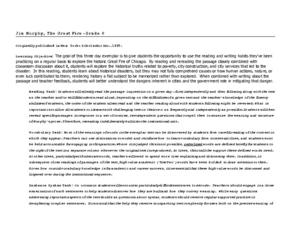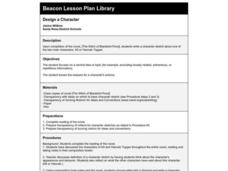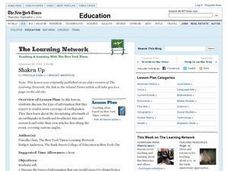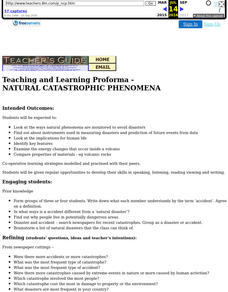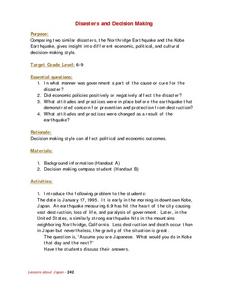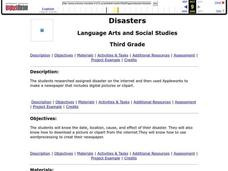Curated OER
Jim Murphy, The Great Fire - Grade 6
The Great Fire by Jim Murphy provides the text for a study of the Chicago fire of 1871. The plan is designed as a close reading activity so that all learners have the same background information require for writing. Richly detailed, the...
Curated OER
What a Relief!
How are disasters addressed by the Federal Government? This New York Times lesson, based on the article "Disaster Aid: The Mix of Mercy and Politics," prompts middle schoolers to discuss the idea of using a disaster declaration as a...
Curated OER
Oil Spill!
Young scholars examine how oil spills are cleaned through an interactive program. They review the facts of oil spills and how the oil spreads. They discuss the short and long term effects of a spill and how they can be avoided.
Curated OER
Disasters - Where, When, Why
Fourth graders research natural disasters that have occurred in the US in the twentieth century. They create computer based database and use the information to write a paragraph.
Curated OER
Titanic Disasters
Students contemplate the worst man-made disasters in history, focusing on the Titanic, read/discuss the article 'The Titanic's Mystique in Digital Packages,' and create an 'Internet scavenger hunt' - Web sites and related questions about...
Curated OER
Disasters: Quiz 80
In this disasters worksheet, students complete multiple choice questions about Hurricane Katrina, the World Trade Centers, and more. Students complete 4 questions total.
Curated OER
Where is Everyone Going?
Young scholars conduct an experiment. In this emergency response lesson, students watch videos about hurricanes and discuss the difference between natural disasters and man-made disasters. Young scholars perform a hurricane...
Curated OER
Disasters
For this social studies worksheet, students find the words that are used to describe different types of disasters. The answers are found at the bottom of the page.
Curated OER
Gone With The Wind
Young scholars review the different types of natural disasters. As a class, they examine how people and communities deal with weather disasters. They compare and contrast how two communities respond to a tornado or hurricane. They...
Curated OER
Disasters - Where, When, Why
Fourth graders research natural disasters that have occurred in the US in the 20th Century. They create a computer database of the disasters and write a paragraph with the information.
Curated OER
Shaken Up
Learners discuss the type of information that they expect to read in news coverage of earthquakes. They explore the devastating aftermath of an earthquake in South and Southeast Asia and research and write their own articles describing...
Curated OER
Natural Catastrophic Phenomena
Sixth graders examine the ways natural phenomena are monitored to avoid disasters. They find out about instruments used in measuring disasters and prediction of future events from data.
Curated OER
Disasters and Decision Making
Students compare the Northridge and Kobe earthquake. In groups, they identify the economic, political and culture decisions that were made according to the various cultures. They answer discussion questions and share their answers with...
Curated OER
Disasters
Third graders examine different types of disasters occurring in our world. They research an assigned disaster on the Internet then create a newspaper to display their information including clipart and digital pictures.
Curated OER
30 Day Journal
Young scholars collect articles, political cartoons, photographs and other artifacts relating to a specific traumatic event, such as September 11th. They reflect on their artifacts in written journals.


